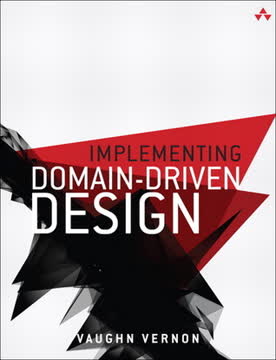Key Takeaways
1. DDD Aligns Software with Business Understanding
With Implementing Domain-Driven Design, Vaughn has made an important contribution not only to the literature of the Domain-Driven Design community, but also to the literature of the broader enterprise application architecture field.
Bridging the gap. Domain-Driven Design (DDD) is a software development approach that prioritizes aligning the software model with the business domain. It emphasizes communication and collaboration between domain experts and developers to create a shared understanding of the business. This shared understanding is then reflected in the code, making the software more intuitive and easier to maintain.
Ubiquitous Language. At the heart of DDD is the concept of a Ubiquitous Language, a common vocabulary used by everyone involved in the project, including domain experts, developers, and testers. This language is used to describe the concepts and rules of the business domain, and it is reflected in the code, documentation, and communication. This eliminates the need for translation between business and technical terms, reducing misunderstandings and improving collaboration.
Beyond bug-free code. DDD goes beyond simply delivering bug-free software. It aims to create a software model that accurately reflects the business domain, making it easier to adapt to changing business needs and to communicate effectively with stakeholders. By focusing on the business value and centralizing knowledge, DDD helps organizations create software that truly meets their needs.
2. Strategic Design Focuses on Core Business Value
Focus on the Core Domain.
Prioritizing the essential. Strategic design in DDD involves identifying the most important parts of the business domain, known as the Core Domain, and focusing development efforts on these areas. This ensures that the software investments are aligned with the business's strategic initiatives and that the most valuable features are delivered first. It also involves understanding the Subdomains and their relationships to the Core Domain.
Subdomains and strategic alignment. Subdomains are smaller, more manageable parts of the overall business domain. By identifying and understanding these subdomains, teams can better allocate resources and prioritize development efforts. Strategic design also helps define the best inter-team organizational relationships and provides early-warning systems for recognizing when a given relationship could cause software and even project failure.
Beyond technical analysis. Strategic design is not just about technical analysis; it's more concerned with the strategic direction of the business. It helps define the best inter-team organizational relationships and provides early-warning systems for recognizing when a given relationship could cause software and even project failure. The technical aspects of strategic design have the goal of cleanly bounding systems and business concerns, which protects each business-level service.
3. Bounded Contexts Define Model Applicability
A Bounded Context is an explicit boundary within which a domain model exists.
Limiting scope. A Bounded Context is a conceptual boundary within which a specific domain model is applicable. It defines the scope of the Ubiquitous Language and ensures that the terms and concepts used in the model have a clear and consistent meaning. This prevents the model from becoming too complex and unwieldy.
Contextual meaning. Within a Bounded Context, every term and phrase has a specific contextual meaning. This helps to avoid ambiguity and ensures that everyone on the team understands the concepts being modeled. The use of the word ubiquitous is not an attempt to describe some kind of enterprise-wide, company-wide, or worldwide, universal domain language.
One Ubiquitous Language per Bounded Context. By applying Bounded Contexts, we distinguish and segregate models properly. This is a key business value that allows business know-how to outlive the relatively short initial development efforts that deliver the first few versions of the software, and the teams that produce it. It’s the point where the cost of developing software is a justifiable business investment, not just a cost center.
4. Context Maps Visualize System Integrations
Context Maps are a powerful tool to help a team understand their business domain, the boundaries between distinct models, and how they are currently, or can be, integrated.
Understanding relationships. Context Maps are diagrams that visualize the relationships between different Bounded Contexts in an organization. They show how the models in each context interact and how data flows between them. This helps teams understand the dependencies between systems and identify potential integration challenges.
Mapping the terrain. Context Maps are not limited to drawing a diagram of your system architecture. It’s about understanding the relationships between the various Bounded Contexts in an enterprise and the patterns used to map objects cleanly from one model to another. Use of this tool is important to succeeding with Bounded Contexts in a complex business enterprise.
Integration patterns. Context Maps also identify the patterns used to integrate different Bounded Contexts, such as Shared Kernel, Customer-Supplier, and Anticorruption Layer. These patterns provide guidance on how to manage dependencies and ensure that the models in each context remain consistent. By using Context Maps, teams can make informed decisions about how to integrate their systems and avoid common integration pitfalls.
5. Entities Model Unique, Identifiable Concepts
When you care only about the attributes of an element of the model, classify it as a VALUE OBJECT.
Unique identity. Entities are domain objects that have a unique identity that distinguishes them from all other objects in the system. This identity is typically a generated value, such as a UUID or a database key. The identity remains stable throughout the Entity's lifetime, even if its attributes change.
Mutability and lifecycle. Entities are mutable, meaning that their attributes can change over time. This reflects the fact that real-world objects evolve and change throughout their lifecycle. Entities also have a lifecycle, which includes creation, modification, and deletion.
Distinguishing characteristics. Entities are used to model concepts that are important to the business and that need to be tracked and managed over time. Examples of Entities include customers, products, and orders. The key is to focus on the essential characteristics and behaviors of the Entity, rather than getting bogged down in unnecessary details.
6. Value Objects Represent Descriptive, Immutable Qualities
When you are trying to decide whether a concept is a Value, you should determine whether it possesses most of these characteristics.
Descriptive qualities. Value Objects are domain objects that represent descriptive aspects of the domain, such as addresses, colors, and monetary amounts. Unlike Entities, Value Objects do not have a unique identity and are considered immutable. Their value is derived from their attributes, not their identity.
Immutability and replaceability. Value Objects are immutable, meaning that their attributes cannot be changed after they are created. If a Value Object needs to be modified, a new instance is created to replace the old one. This ensures that Value Objects are always in a consistent state and that they can be safely shared between different parts of the system.
Conceptual whole. Value Objects often represent a conceptual whole, meaning that their attributes are closely related and should be treated as a single unit. For example, an address Value Object might contain attributes for street, city, state, and zip code. These attributes are all related and should be treated as a single unit.
7. Services Encapsulate Domain Logic and Transformations
When a significant process or transformation in the domain is not a natural responsibility of an ENTITY or VALUE OBJECT, add an operation to the model as a standalone interface declared as a SERVICE.
Stateless operations. Services are stateless operations that perform domain-specific tasks that do not naturally belong to Entities or Value Objects. They encapsulate complex business logic and transformations that involve multiple domain objects. Services are often used to coordinate interactions between different parts of the domain model.
Domain-specific tasks. Services are used to perform tasks that are specific to the business domain, such as calculating a price, validating a user's credentials, or sending an email. These tasks are often too complex or too general to be placed directly on Entities or Value Objects.
Ubiquitous Language. Services should be defined in terms of the Ubiquitous Language, using names and concepts that are familiar to domain experts. This helps to ensure that the Services are aligned with the business domain and that they are easy to understand and use.
8. Domain Events Capture Significant Occurrences
Model information about activity in the domain as a series of discrete events.
Modeling occurrences. Domain Events are objects that represent significant occurrences in the domain, such as an order being placed, a customer being created, or a product being shipped. They capture the essence of what happened and provide a way to notify other parts of the system about the occurrence.
Publish-subscribe mechanism. Domain Events are typically published using a publish-subscribe mechanism, allowing interested parties to subscribe to specific Events and be notified when they occur. This decouples the publisher of the Event from the subscribers, making the system more flexible and maintainable.
Architectural styles. Domain Events can be used in a variety of architectural styles, such as Event-Driven Architecture (EDA) and Command-Query Responsibility Segregation (CQRS). They provide a way to communicate changes between different Bounded Contexts and to maintain eventual consistency.
9. Aggregates Enforce Consistency Boundaries
For each type of object that needs global access, create an object that can provide the illusion of an in-memory collection of all objects of that type.
Consistency and transactions. Aggregates are clusters of Entities and Value Objects that are treated as a single unit for the purpose of maintaining consistency. They define a consistency boundary around a set of objects, ensuring that all changes within the Aggregate are transactionally consistent.
Rules of thumb. There are several rules of thumb for designing Aggregates, such as:
- Model true invariants in consistency boundaries
- Design small Aggregates
- Reference other Aggregates by identity
- Use eventual consistency outside the boundary
Balancing consistency and performance. Designing Aggregates involves balancing the need for consistency with the need for performance and scalability. Smaller Aggregates are generally easier to manage and scale, but they may require more complex coordination between different parts of the system.
10. Repositories Provide Abstraction for Persistence
For each type of object that needs global access, create an object that can provide the illusion of an in-memory collection of all objects of that type.
Abstraction and persistence. Repositories are objects that provide an abstraction over the persistence mechanism, allowing the domain model to be independent of the specific database or storage technology being used. They provide a collection-like interface for accessing and managing Aggregate instances.
Collection-oriented vs. persistence-oriented. There are two main types of Repositories: collection-oriented and persistence-oriented. Collection-oriented Repositories mimic the behavior of an in-memory collection, while persistence-oriented Repositories provide more direct access to the underlying persistence mechanism.
Testing and implementation. Repositories can be tested using in-memory implementations, allowing developers to verify the behavior of the domain model without relying on a real database. They can be implemented using a variety of technologies, such as object-relational mappers (ORMs) and NoSQL databases.
11. Application Layer Orchestrates Use Cases
The Application Services are the direct clients of the domain model.
Task coordination. The Application Layer is responsible for coordinating the execution of use cases and user stories. It acts as a mediator between the user interface and the domain model, orchestrating the interactions between different domain objects to fulfill the user's request.
Transactions and security. Application Services also manage transactions and security, ensuring that all changes to the domain model are performed atomically and that only authorized users can access sensitive data. They are the primary means of expressing use cases or user stories on the model.
Thin layer. Application Services should be kept thin and focused on task coordination, avoiding any complex business logic or domain-specific rules. This helps to keep the domain model pure and maintainable.
Last updated:
FAQ
What is Implementing Domain-Driven Design by Vaughn Vernon about?
- Comprehensive DDD Guide: The book is a practical and in-depth guide to applying Domain-Driven Design (DDD) in enterprise software, bridging theory and real-world implementation.
- Strategic and Tactical Focus: It covers both high-level strategic patterns (like Bounded Contexts and Context Maps) and tactical building blocks (such as Entities, Value Objects, Aggregates, Services, and Domain Events).
- Modern Architecture Integration: Vaughn Vernon explains how DDD fits with contemporary architectures, including Hexagonal Architecture, REST, CQRS, Event-Driven Architecture, and NoSQL.
- Case Study Approach: The book uses realistic case studies, such as the SaaSOvation projects, to illustrate challenges and solutions in DDD, making concepts accessible for all experience levels.
Why should I read Implementing Domain-Driven Design by Vaughn Vernon?
- Bridges Theory and Practice: The book provides actionable guidance for developers struggling to move from DDD theory to effective implementation in real projects.
- Covers Modern Challenges: It addresses integrating DDD with distributed systems, modern persistence technologies, and scalable architectures.
- Expert Endorsements: Praised by DDD pioneers like Eric Evans, it is considered essential reading for mastering DDD.
- Real-World Lessons: Through practical examples and stories, readers learn to avoid common pitfalls like anemic domain models and data model leakage.
What are the key takeaways from Implementing Domain-Driven Design by Vaughn Vernon?
- Strategic and Tactical Mastery: Readers gain a deep understanding of both strategic (Bounded Contexts, Context Maps) and tactical (Aggregates, Entities, Value Objects, Domain Events) DDD patterns.
- Integration Techniques: The book emphasizes the importance of integrating Bounded Contexts using RESTful HTTP, messaging, and event-driven approaches.
- Modeling for Complexity: It teaches how to model complex business domains effectively, focusing on Ubiquitous Language and aligning software with business needs.
- Modern Architectural Patterns: Readers learn how to apply DDD within Hexagonal Architecture, CQRS, Event Sourcing, and other modern styles.
What are the most important concepts of Domain-Driven Design explained in Implementing Domain-Driven Design by Vaughn Vernon?
- Ubiquitous Language: A shared language between developers and domain experts, reflected in the code, ensuring clear communication and accurate modeling.
- Bounded Contexts: Explicit boundaries within which a domain model applies, preventing confusion from overlapping or conflicting definitions.
- Aggregates and Entities: Aggregates are clusters of Entities and Value Objects forming consistency boundaries; Entities have unique identities and lifecycles.
- Domain Events: Events that represent significant domain occurrences, used for integration, decoupling, and modeling behavior.
How does Vaughn Vernon recommend starting with Domain-Driven Design in a new project?
- Assess Project Complexity: Use the DDD Scorecard to determine if the project is complex enough to benefit from DDD.
- Engage Domain Experts: Involve true domain experts early and continuously to develop the Ubiquitous Language and accurate models.
- Develop Ubiquitous Language: Collaborate with the team and domain experts to create and evolve a shared language that precisely reflects the business domain.
- Begin with Strategic Design: Understand the Domain, Subdomains, and Bounded Contexts before diving into tactical modeling to avoid mixing models and creating a Big Ball of Mud.
What are Bounded Contexts and why are they important in Implementing Domain-Driven Design by Vaughn Vernon?
- Definition and Purpose: A Bounded Context is a conceptual boundary around a domain model where terms and concepts have specific, unambiguous meanings.
- Linguistic Boundary: It ensures the Ubiquitous Language is consistent and pure within the context, which is essential for clear communication and correct modeling.
- Alignment with Subdomains: Bounded Contexts often align with Subdomains (Core, Supporting, Generic), helping manage complexity and focus development efforts.
- Integration and Autonomy: Different Bounded Contexts integrate via Context Maps, enabling autonomy and clear translation between models.
What is a Context Map and how does Vaughn Vernon use it in Implementing Domain-Driven Design?
- Visual Integration Tool: A Context Map is a diagram showing relationships and integration patterns between multiple Bounded Contexts in a solution.
- Integration Patterns: It identifies organizational and technical relationships, such as Customer-Supplier, Conformist, Shared Kernel, and Anticorruption Layer.
- Facilitates Collaboration: Context Maps help teams negotiate responsibilities, avoid misunderstandings, and plan for consistency and autonomy.
- Dynamic Artifact: They are living documents, updated as the project evolves, guiding development and integration.
How does Implementing Domain-Driven Design by Vaughn Vernon explain Aggregates and their design?
- Consistency Boundaries: Aggregates cluster Entities and Value Objects under a Root Entity to enforce transactional consistency boundaries.
- Design Small Aggregates: The book advocates for small, focused Aggregates that encapsulate true business invariants, improving performance and scalability.
- Reference by Identity: Aggregates should reference other Aggregates by unique identity, not direct object references, to reduce coupling and support distribution.
- Eventual Consistency: Outside Aggregate boundaries, consistency is managed through Domain Events and asynchronous updates.
What are Domain Events and how are they used in Implementing Domain-Driven Design by Vaughn Vernon?
- Capturing Domain Changes: Domain Events represent significant occurrences in the domain, modeled as immutable objects with relevant data.
- Decoupling and Integration: Events enable decoupled, scalable, and autonomous systems by supporting asynchronous communication and integration across Bounded Contexts.
- Event Sourcing Support: Domain Events are used to persist state changes, enabling auditability and replayability.
- Implementation Patterns: The book details lightweight publish-subscribe patterns, event stores, and integration via messaging or RESTful notifications.
How does Vaughn Vernon recommend integrating Bounded Contexts in Implementing Domain-Driven Design?
- RESTful HTTP Integration: Expose RESTful resources as Open Host Services, designing APIs that shield domain model details and support client autonomy.
- Messaging-Based Integration: Use Domain Events published via messaging middleware (e.g., RabbitMQ) for temporal decoupling and higher autonomy.
- Handling Duplication and Consistency: Employ strategies like version-aware commands, idempotent operations, and process trackers to manage eventual consistency and retries.
- Context Map Guidance: Use Context Maps to illustrate and manage integration patterns and relationships.
What architectural styles and patterns does Vaughn Vernon recommend in Implementing Domain-Driven Design?
- Hexagonal Architecture: Isolates the domain model from external concerns, supporting multiple user interfaces and persistence mechanisms.
- Layered Architecture with DIP: Organizes code into layers, improved by the Dependency Inversion Principle for better testability and separation of concerns.
- CQRS and Event Sourcing: Separates command and query responsibilities, supports scalability, and enables storing state as events for auditability.
- Event-Driven and Service-Oriented: Uses Domain Events and services for distributed workflows and integration.
What are the most common challenges in applying Domain-Driven Design, and how does Vaughn Vernon suggest overcoming them?
- Developing Ubiquitous Language: Requires significant collaboration and iteration; overcome by continuous engagement with domain experts and agile modeling.
- Involving Domain Experts: Experts may be unavailable; use creative engagement strategies and emphasize the value of their input.
- Changing Developer Mindset: Shift from technical-only thinking to domain-centric design through education, examples, and iterative refactoring.
- Avoiding Anemic Models: Design rich domain models with encapsulated behavior, resisting the temptation to create data-holder objects.
- Managing Complexity: Use Bounded Contexts and Context Maps to segment the domain and integrate carefully, avoiding Big Ball of Mud scenarios.
What are the best quotes from Implementing Domain-Driven Design by Vaughn Vernon and what do they mean?
- On Learning and Integration: “Making mental connections is our most crucial learning tool, the essence of human intelligence; to forge links; to go beyond the given; to see patterns, relationships, context.” — Marilyn Ferguson. This underscores the importance of understanding relationships between Bounded Contexts for successful integration.
- On Distributed Systems: “The network is not reliable. There is always some latency, and maybe a lot. Bandwidth is not infinite. Do not assume that the network is secure.” — Vaughn Vernon. This reminds developers to design integration with the realities of distributed computing in mind.
- On Responsibility: “You know, J, when a cowboy’s too old to set a bad example, he hands out good advice.” — LB. This metaphor encourages sharing wisdom gained from experience, especially in complex system design and integration.
- On Domain Modeling: The book is filled with practical advice and memorable lines that reinforce the importance of aligning software with business needs and embracing complexity thoughtfully.
Review Summary
Implementing Domain-Driven Design receives mixed reviews. Many praise its practical approach and comprehensive coverage of DDD concepts, finding it valuable for understanding and applying DDD principles. Readers appreciate the real-world examples and code snippets. However, some criticize the book's verbosity, repetitiveness, and occasional lack of clarity. The Java and Hibernate focus is noted as potentially limiting. Despite these drawbacks, many consider it an essential read for software developers, particularly when paired with Evans' original DDD book. Some suggest it's better suited for those already familiar with DDD basics.
Similar Books
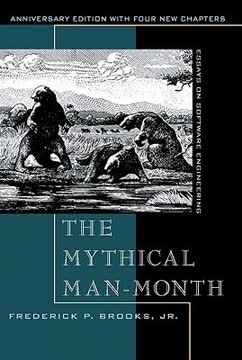
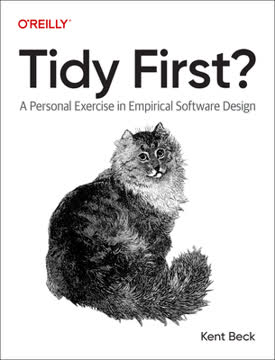


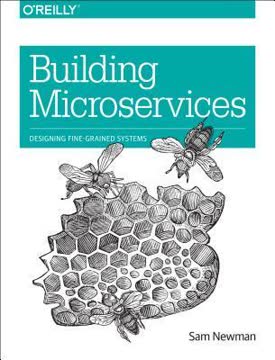

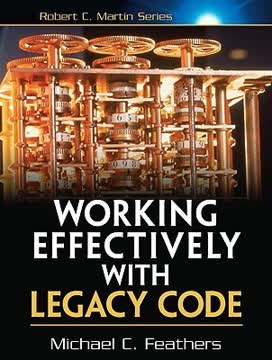
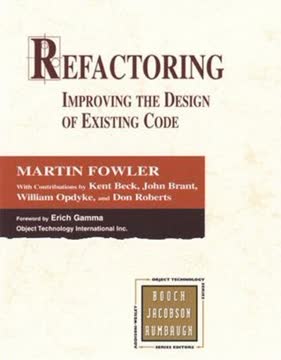
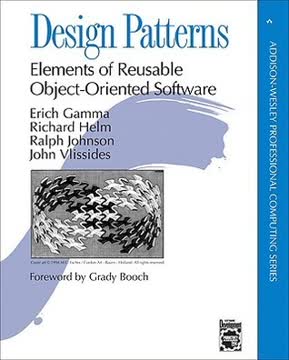
Download PDF
Download EPUB
.epub digital book format is ideal for reading ebooks on phones, tablets, and e-readers.
